Banyan Tree Gate and Noen Wong Fortress
Banyan Tree Gate is a north gate of Noen Wong Fortress located in Bangkaja sub-district, Mueang Chanthaburi district, Chanthaburi province. It was built in 1834, during the reign of King Rama III in order to protect the eastern of Thailand. Noen Wong is mean a circle hill that the fortress located on, so this area is appropriate to build a city wall to protect the land from enemies.
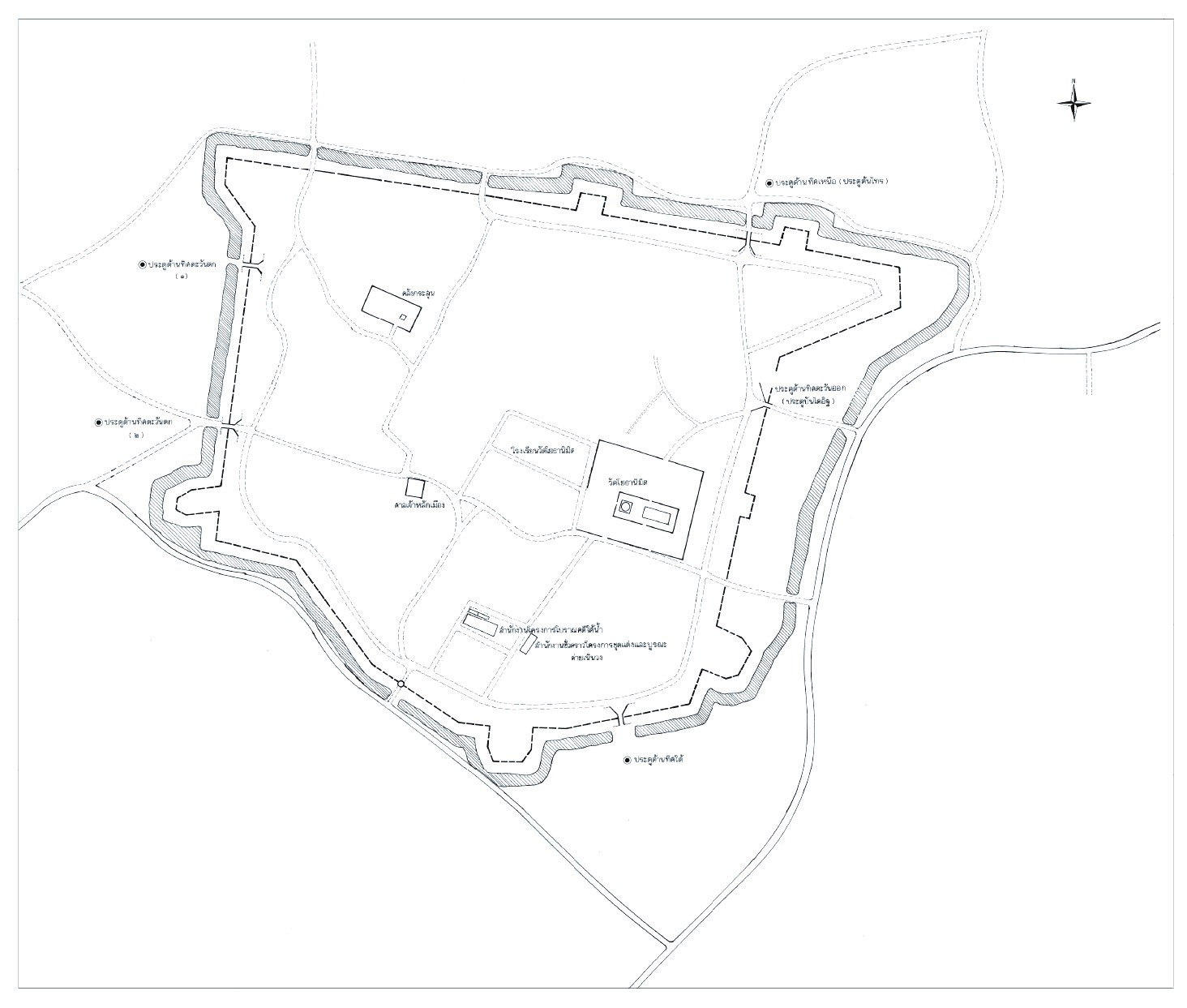
Plan of Noen Wong Fortress
Noen Wong Fortress is surrounded by a moat and a rampart. The moat dug into laterite about 15 meters in-width. The rampart was built by laterite that dug from the moat which is about 25 meters wide and 5 meters high. It has 8 gates without doors, each gate wide approximately 3.5 meters. It appeared that there are 4 wooden columns and brick walls about 5 meters high to support the superstructure that is assumed of the observation tower or battle tower. Banyan Tree Gate is only one gate that a superstructure remained.
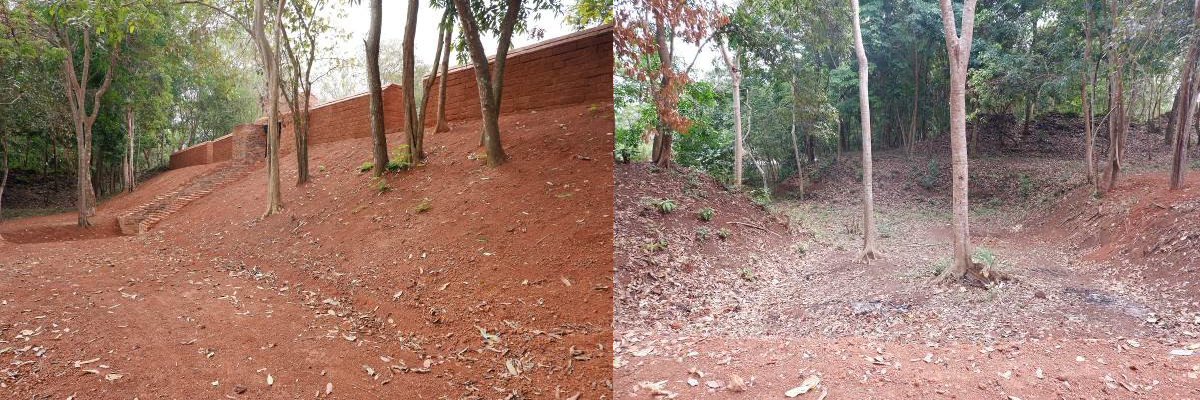
Rampart (left) and moat (right)
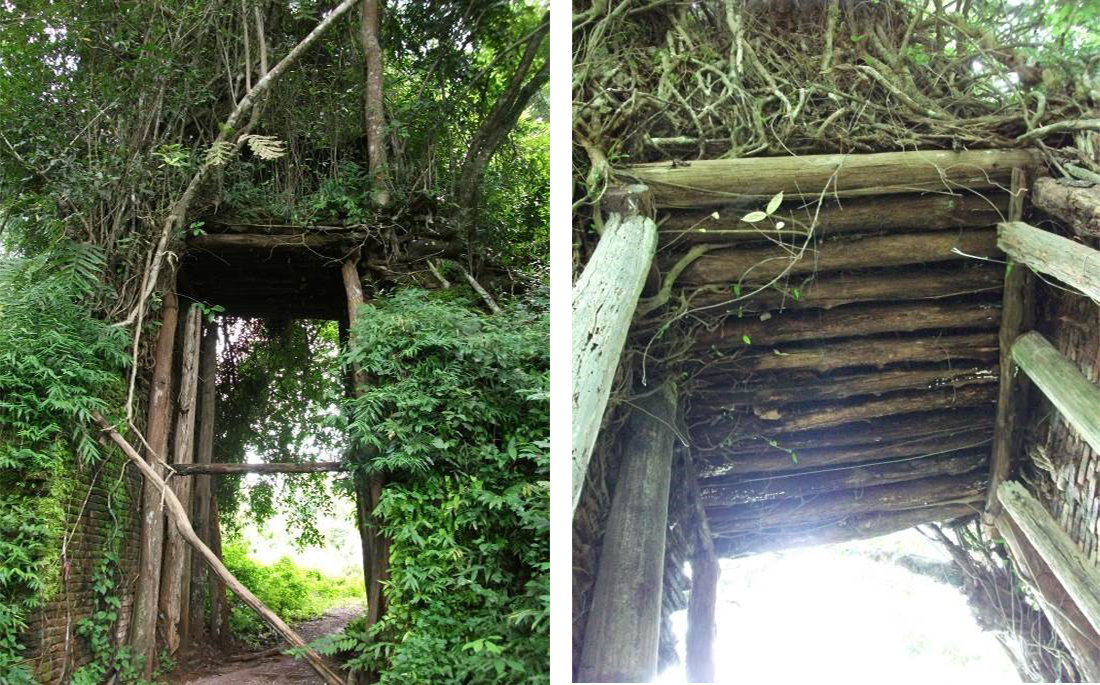
Wooden columns and wooden beams before a reconstruction
On each side of the building, there are laterite merlons wide 7-10 meters, height 1.50 meters and the walkway wide approximately 8 meters behind the merlons.
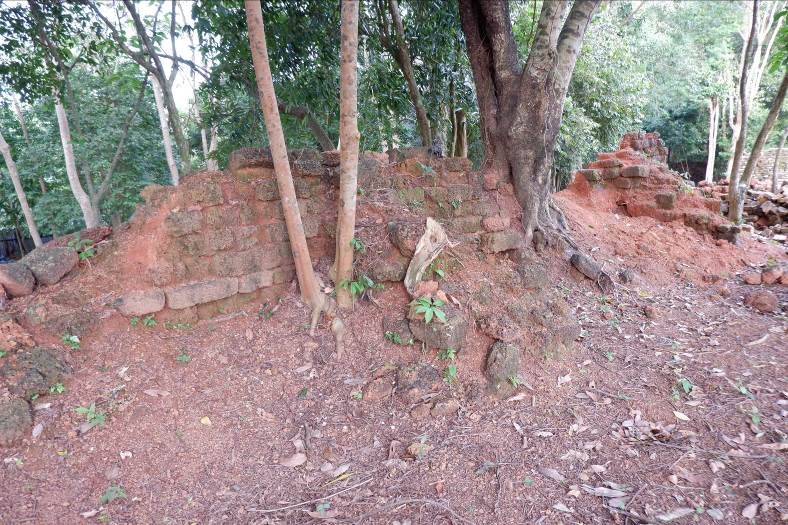
Laterite merlons before a reconstruction
The Fine Art Department by The 5th Regional Office of Fine Art, Prachinburi reconstructed the Banyan Tree gate in 2019. During a reconstruction, only the foundation of the superstructure remained. It is set on a wooden log to support the lotus base made of bricks. The wall and roof structure could not be found. However, there were found part of the building plaster, stucco window frame parts and terracotta roof tiles. All of the components can be assumed that the building on the top of the gate was a building with a base made of bricks, plastered wall and thatched with terracotta roof tiles.
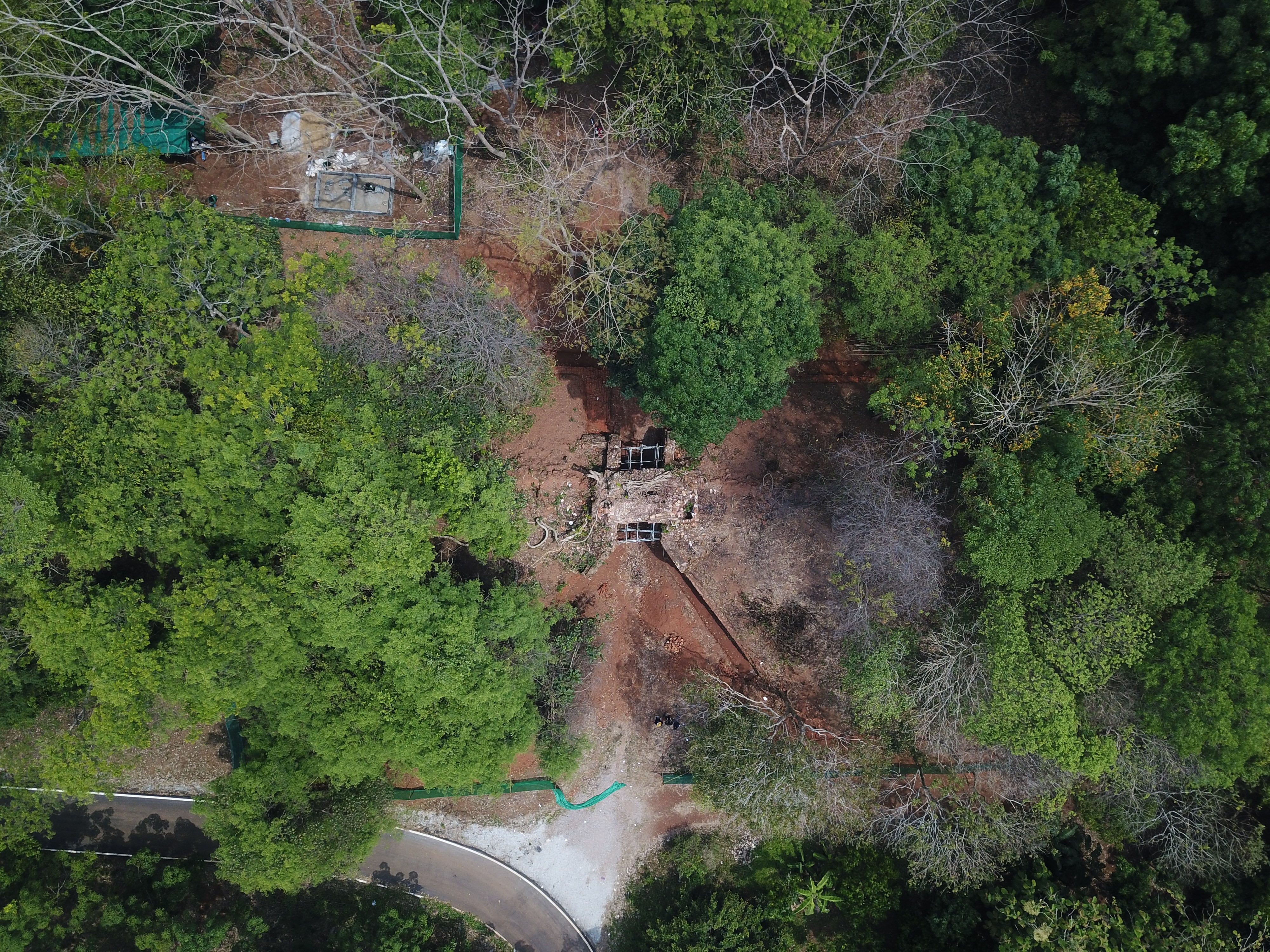
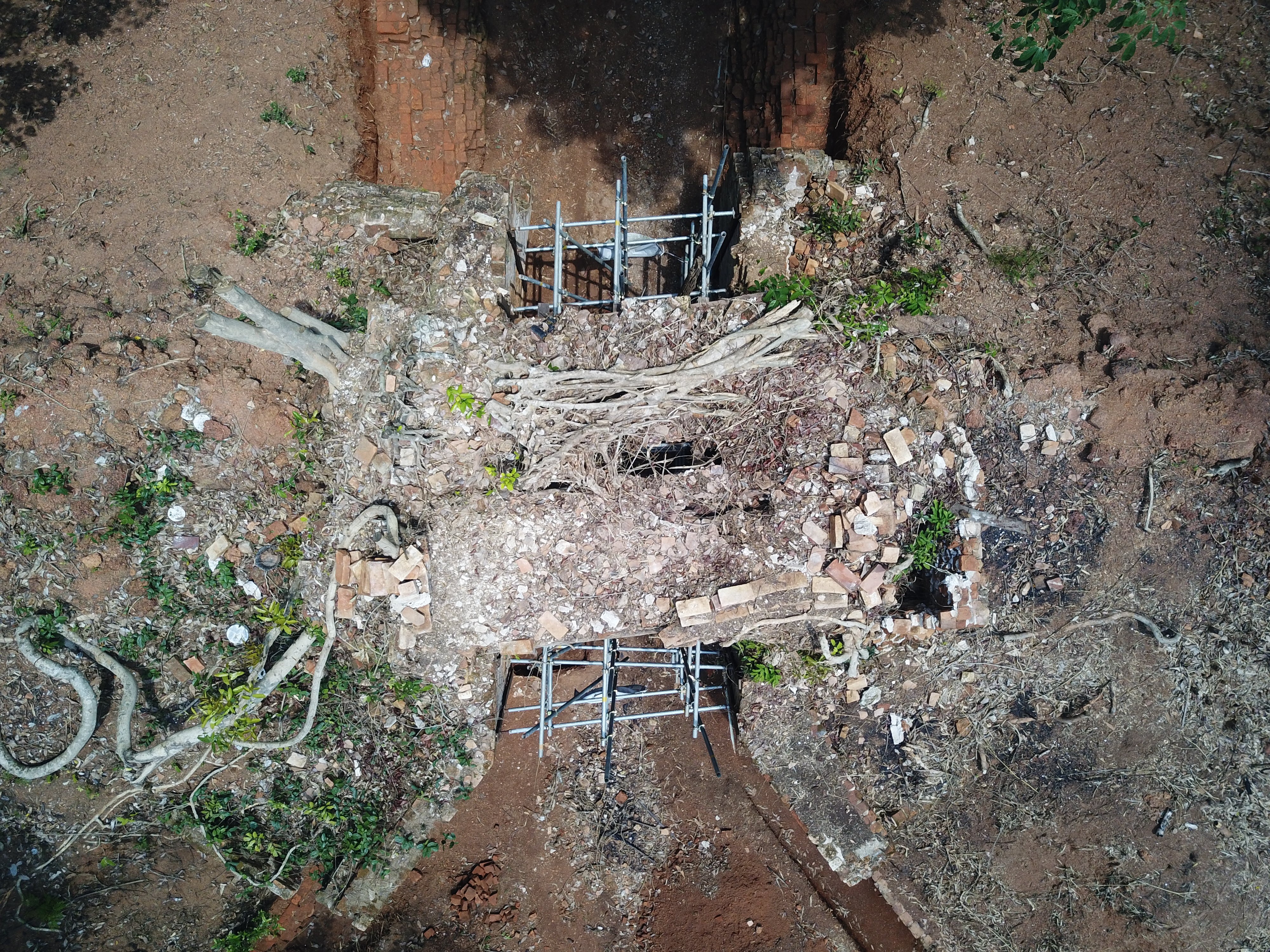
Top view of the gate after remove a banyan tree
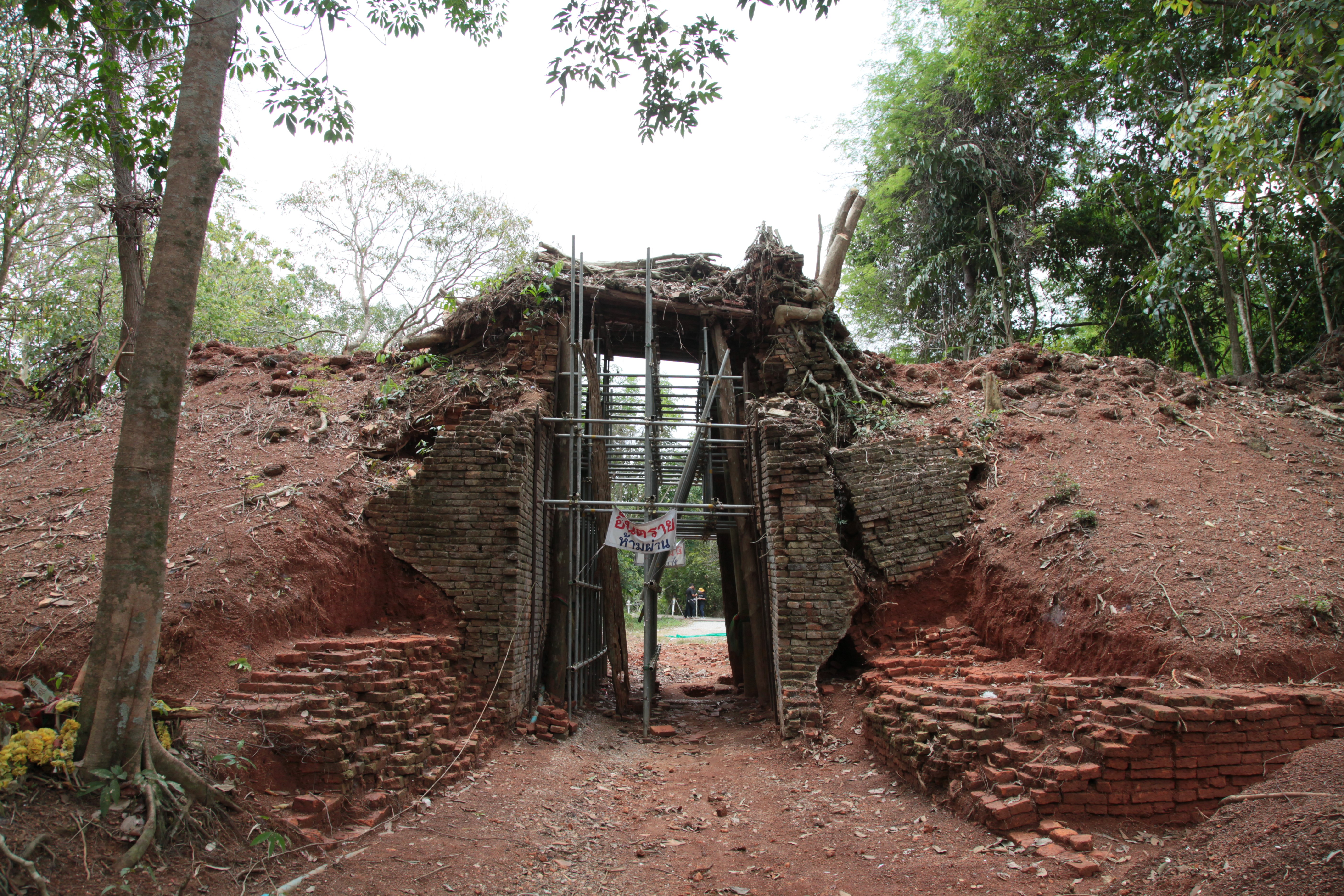
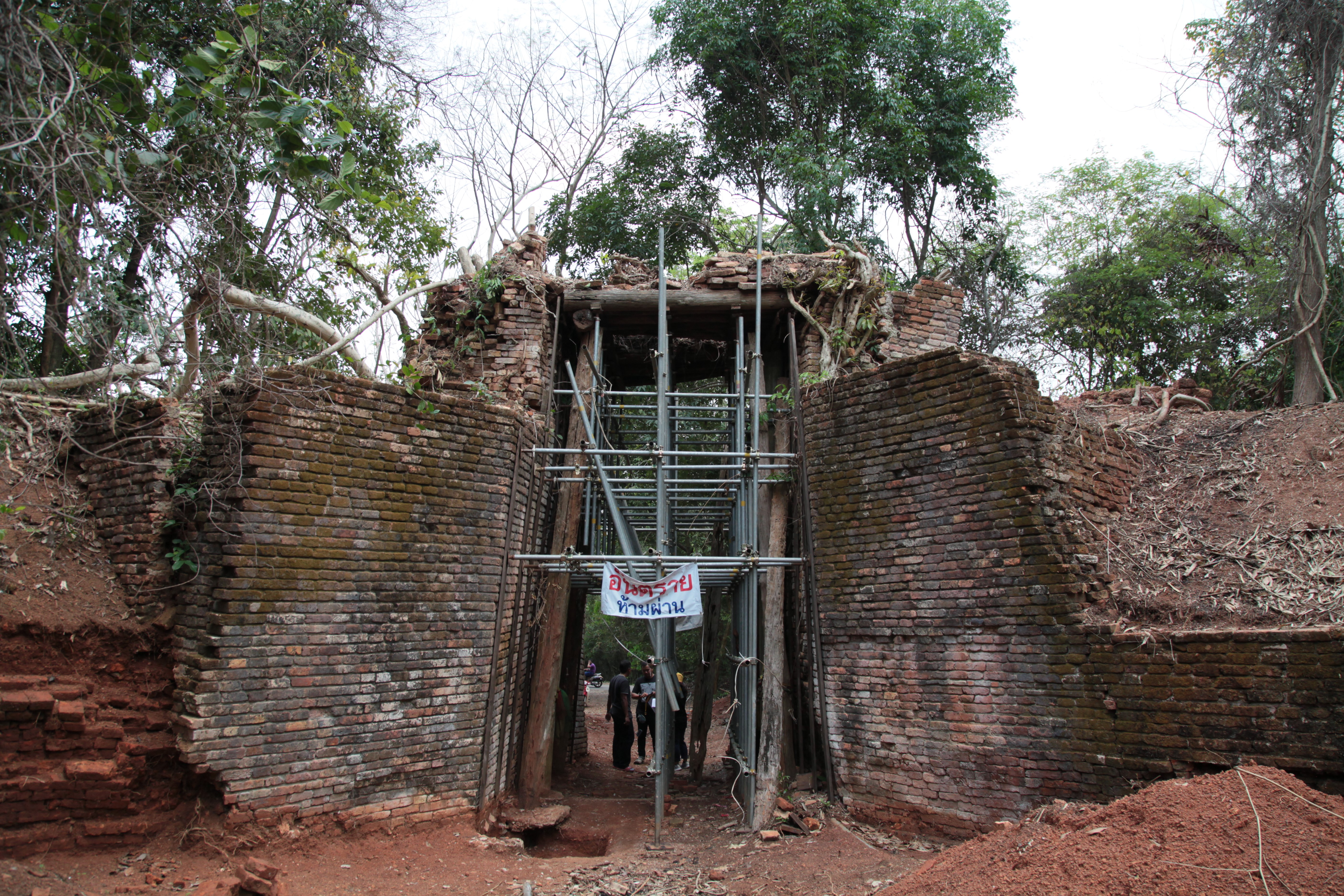
The gate during a reconstruction
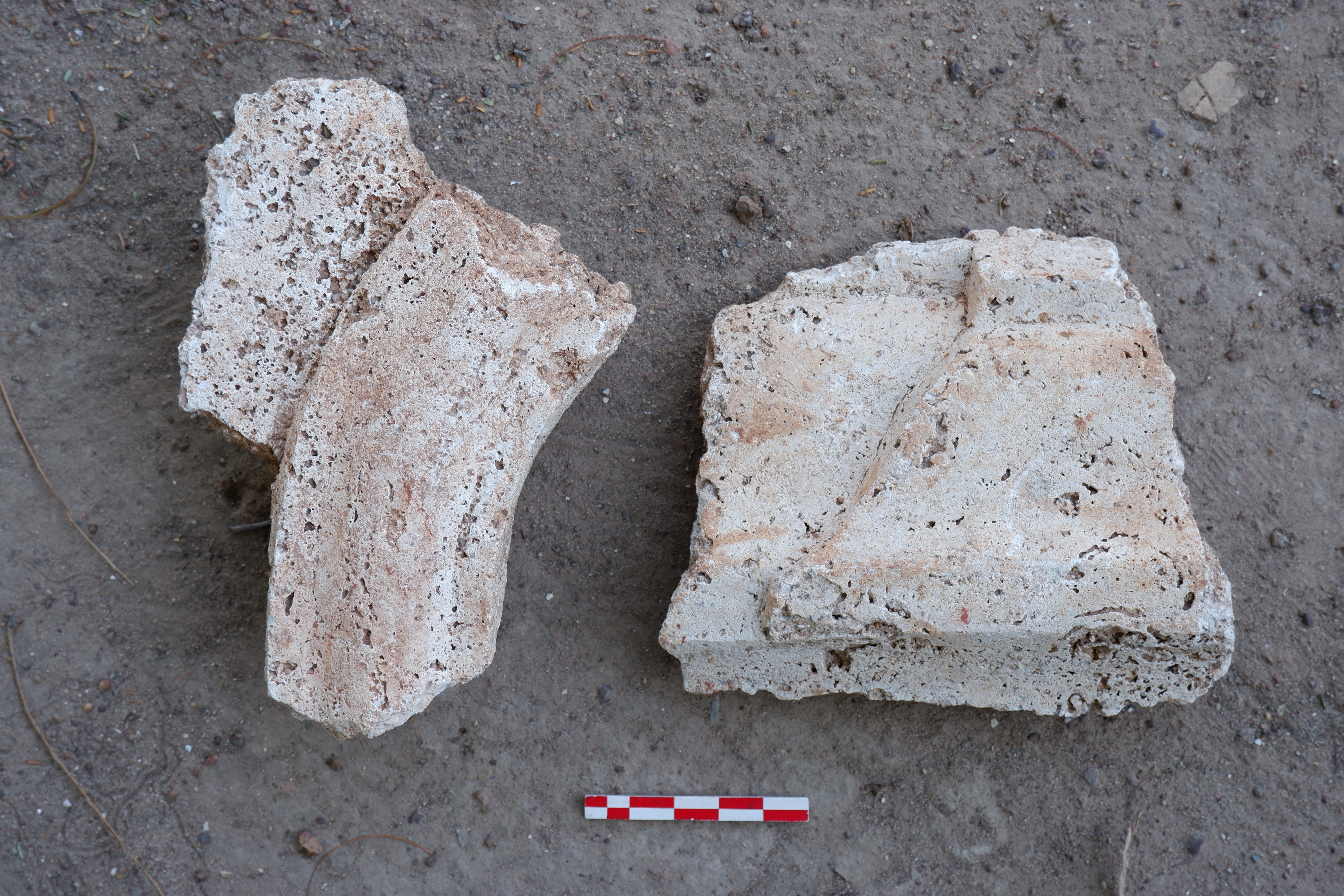
Stucco window frame parts (right) and building plaster (left)
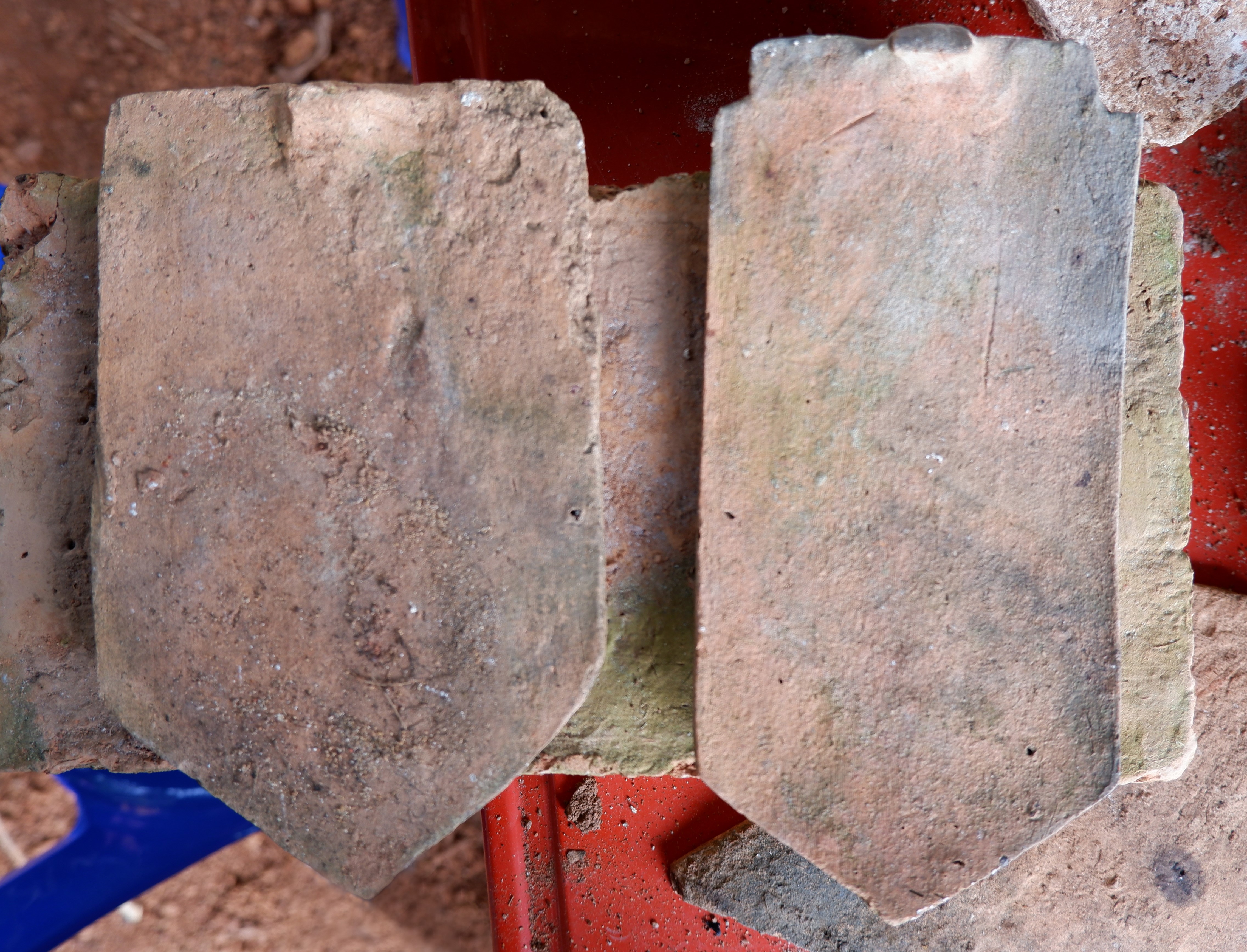
Terracotta roof tiles
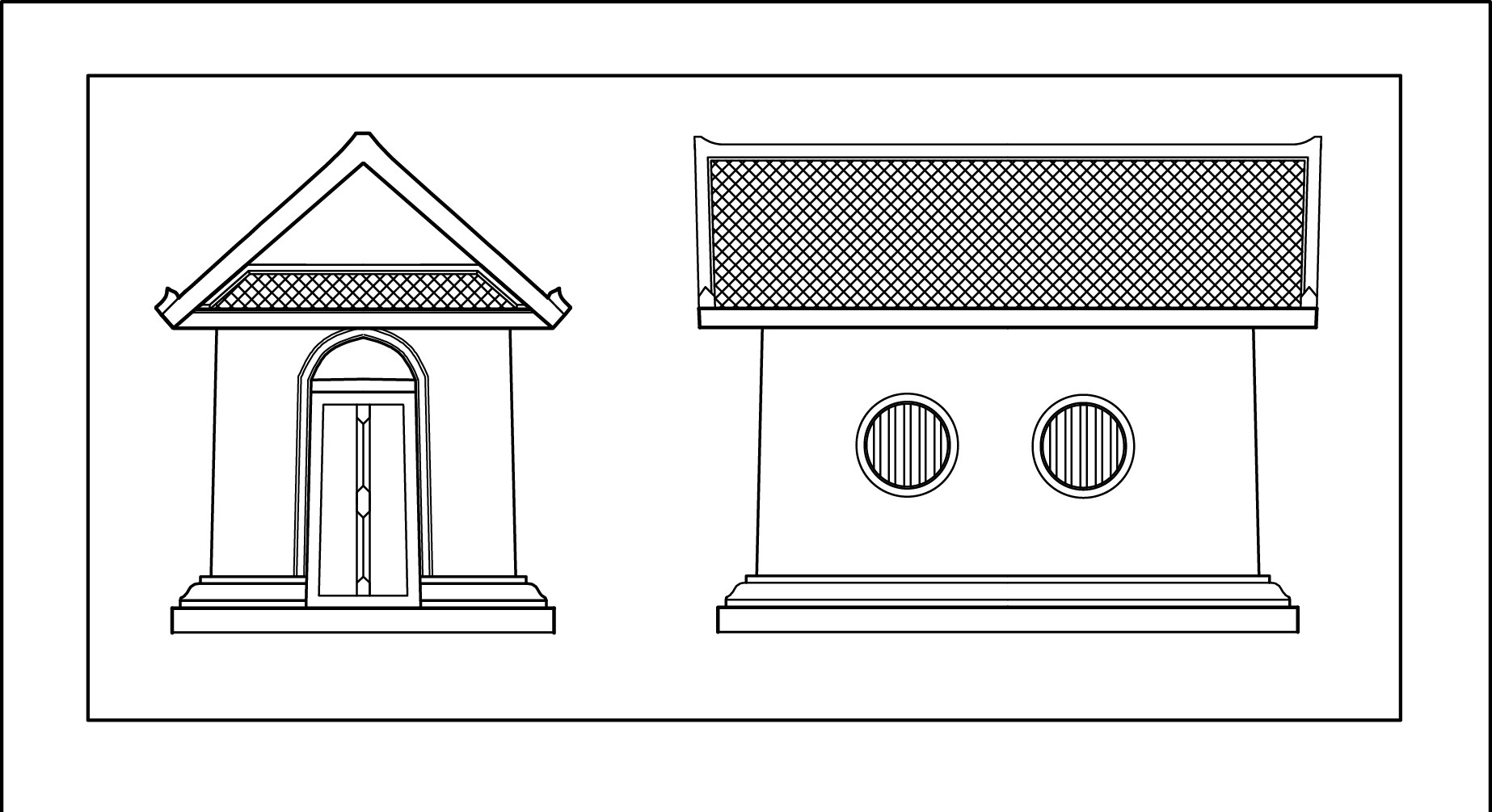
The first reconstructed sketch of the building on the top of the gate
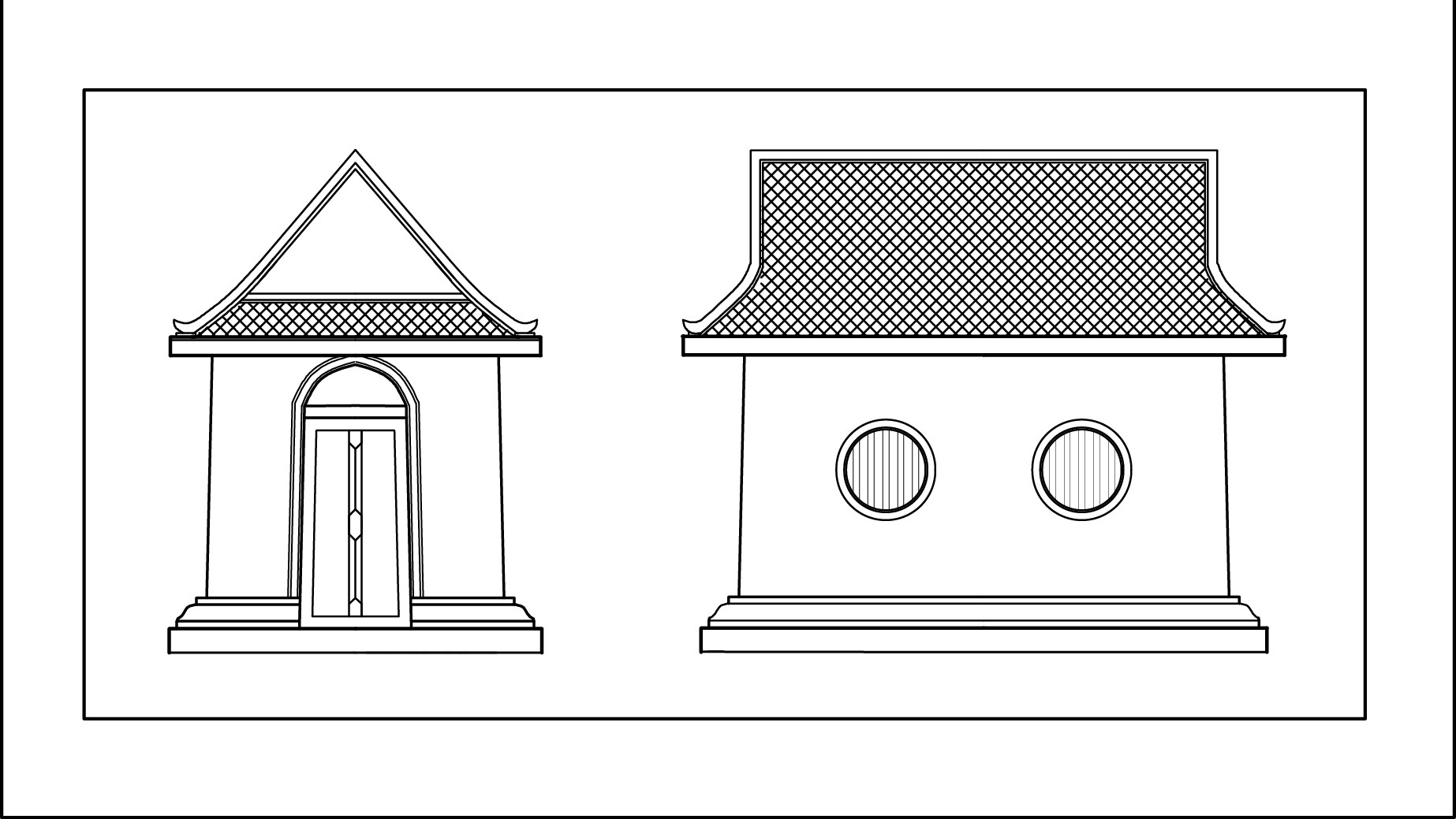
The second reconstructed sketch of the building on the top of the gate
According to the Royal Gazette no 71, chapter 3, dated January 5th, 1954, The Fine Art Department announced that this monument has been listed as the nation’s historic site.



